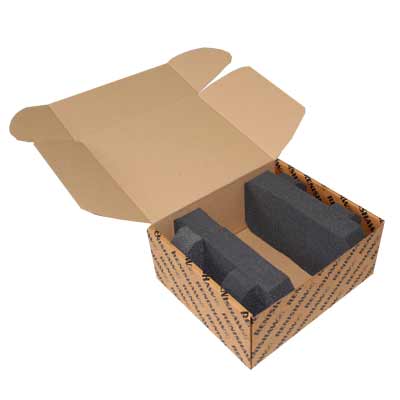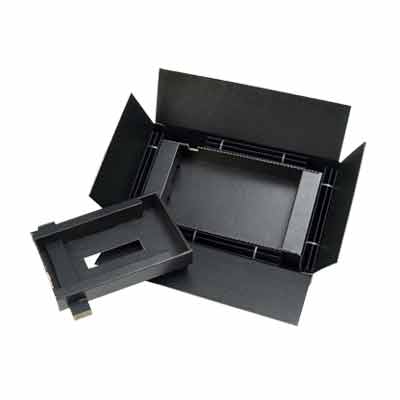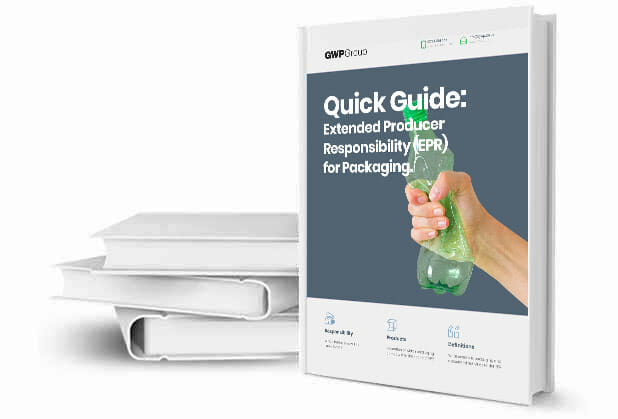Defining sustainable packaging
Understanding sustainability and how it impacts your organisation
Whether you are a business looking to reduce the environmental impact of your packaging or a consumer concerned about the environment, you may have wondered, “What are the 3 Rs?”
The 3 Rs are ‘reduce’, ‘reuse’, and ‘recycle’. Many believe the term dates back to the 1970s, when people first became aware of the problems caused by waste and pollution. It is possible to apply the 3 Rs to many applications, including packaging use. An extended 7 Rs also includes ‘remove’, ‘renew’, ‘read’, and ‘revenue’.

In this guide, we’ll provide you with further detailed information on precisely what the 3 Rs are. We’ll also cover how you can apply them to your packaging (and other products or materials that may impact the environment), along with their origins and background information.
Contents
Introduction
The history and origins of the 3 Rs
There is considerable debate on the origins of the “reduce, reuse, recycle” phrase. However, most agree that it originated in the USA in the 1970s.
During the Vietnam War, many Americans became much more environmentally conscious. There was a particular focus on air pollution, water quality, and the handling and disposal of waste. This growing concern led to three significant events.
Firstly, a US senator from Wisconsin, Gaylord Nelson, organised the first Earth Day. This event occurred on 22nd April 1970, which saw as many as 20 million Americans uniting for the environmental cause.

Secondly, partly due to the event’s success and the growing clamour for improved environmental practices, the US Environmental Protection Agency (EPA) was established later in the same year.
Finally, in 1976, the Resource Conservation and Recovery Act was passed by the US Congress. It is at this time that many believe the 3 Rs were created.
The 3 Rs
Reduce, reuse, recycle
But what exactly is meant by “reduce, reuse, and recycle”? And how can the 3 Rs be applied to your business?
Considering your packaging, it is possible to treat any and all of the 3 Rs as a strategy to improve your business’s sustainability.
Reduce
It is often possible to reduce the amount of packaging that you use; for example, you can potentially replace polystyrene with cardboard fittings. Specialist bags, such as those which are ESD-safe, can be eliminated by using anti-static boxes (such as Corstat). Often, when you analyse your packaging, you can begin to identify additional items that are not always necessary.
However, ‘reduce’ can also mean examining the amount of material used in your packaging. Working with an experienced packaging designer on a value engineering brief can often reveal that you can use lighter-weight material without affecting the performance. Similarly, it may be possible to introduce different pack designs that are more efficient in their material usage.

Besides the environmental benefits of reducing your packaging (or material) use, there are several other business advantages.
These typically include reducing your ongoing costs by purchasing fewer materials and items, improving packing times by eliminating certain products, lowering transport costs due to lighter weights, and facilitating easier recycling for your customers.
Reuse
Many businesses and individuals believe that recyclable packaging is the most sustainable option. While recycling packaging is essential (particularly for corrugated packaging), surprisingly, reusable packaging can often be more environmentally friendly in the long term.
The energy and cost involved in recovery, sorting, recycling, and manufacturing new packaging materials can often have a considerably greater environmental impact than simply using the same packaging over multiple trips.
As such, it is essential to consider whether reusable packaging, such as Correx tote containers or Euro containers, would be the most sustainable option for your business.
Besides environmental improvements, reusing your packaging can also reduce mid- to long-term costs. As they are often made from plastics or more durable materials, returnable tote containers are typically more robust and durable, thereby better protecting their contents. You can generally enhance your reusable packaging with various dividers and inserts.

Recycle
Suppose it is not possible to reduce your packaging use or switch to reusable packaging. In that case, ensuring your packaging is recyclable and ideally recycled is crucial.
For example, using corrugated cardboard fittings instead of plastic-based inserts can significantly ease the recycling process for your customers. Incidentally, this is also likely to improve customer satisfaction.
Using recycled and recyclable packaging can also help to avoid the Plastic Packaging Tax and potentially reduce any fees you may incur as part of the Extended Producer Responsibility (EPR) legislation.
If recyclable packaging is the best option for your product or application, then communicating this is vital. Including recycling symbols on your packaging, such as those from OPRL, RESY, or the PAP 20 symbol (for cardboard packaging), improves clarity for your end users (and therefore recycling rates) and highlights your eco-credentials.

The 7 Rs
What are other ways to improve the sustainability of your packaging?
Taking the concept of the 3 Rs further, Wal-Mart identified the “7 Rs of Sustainable Packaging” to further minimise their environmental impact. Many now reference these as the model for corporate sustainability beyond just packaging.
But what are the 7 Rs?
Including the original 3 Rs, the seven identified strategies are as follows:
- Reduce
- Reuse
- Recycle(able)
- Remove
- Renew
- Revenue
- Read
Reduce
‘Reduce’ sees businesses use correctly sized packaging (reduced size) and optimising strength and design to ensure you use minimal material whilst remaining fit for purpose.
Refer to the Packaging (Essential Requirements) Regulations for guidance on designing compliant packaging.
Reuse
All transit and supply chain packaging, including pallets and delivery containers, should be reused wherever possible.
Recycle(able)
Packaging should use materials with the highest possible recycled content. Recycled material should include post-consumer recycled content where appropriate. Packaging should also be easily recyclable by consumers, specifically within kerbside collections.
Remove
Unnecessary packaging, such as multiple layers, should be eliminated where its absence will not compromise protection during transit. You should also remove harmful or difficult-to-recycle materials from your packaging.
Refer to the Packaging (Essential Requirements) Regulations for guidance on designing compliant packaging.
Renew(able)
Materials used to manufacture your boxes, bags, or other items should be from renewable sources, such as FSC-certified packaging. Wal-Mart also suggests renewable resources are measured using ASTM D6866, and biodegradable materials should meet ASTM D6400 or ASTM D6868.
Revenue
All of the strategies within the 7 Rs should be achievable at the same or reduced costs. It is essential to take a long-term perspective when considering this (e.g., switching to returnable containers will have a short-term impact on costs but will ultimately lower them over the mid- to long-term).
Read
Ultimately, it is crucial to educate yourself on what constitutes genuinely sustainable packaging and stay informed about emerging materials, new developments, and evolving consumer expectations.
Implementing the 3 Rs
How GWP can help your business improve the sustainability of your packaging
GWP takes pride in aiming to be one of the UK’s leading sustainable packaging companies.
As such, we always look to take a holistic approach to minimising the environmental impact of your packaging. What is also often overlooked is that even minor, incremental improvements in your packaging can result in immediate and significant benefits to your business.

By enabling you to reduce both the overall level and amount of materials you use in your packaging, it also allows for greater cost savings. This benefit is seen not only in the packaging itself but also in its transportation and disposal.
You can work with a team of designers who have received industry recognition for their sustainable packaging designs, offering the full spectrum of reusable, recyclable, and even biodegradable packaging options. You can also be sure that any advice you receive is genuinely impartial and unbiased.
Summary
Understanding what sustainable packaging is
Whilst it is simple to answer the question of what the 3 Rs are, implementing the ideas into your business can prove more difficult.
So, if you would like to improve the sustainability of your packaging, GWP can help. Please speak with one of our experts today for an initial consultation and take the first step on your journey to truly sustainable packaging.
About the author

David is responsible for driving improvements in sustainability at GWP and the wider Macfarlane Group, having previously performed a similar role for Zero Waste Scotland.
Important note
Due to the sensitive and regulated nature of the topic this guide addresses (eco-friendly packaging) we have taken extra steps to ensure its accuracy and reliability. You can find out more in our content policy.
All information is, to the best of our knowledge, accurate and correct at the time of publication. Please also note that, as all scenarios vary, not all information contained in this guide may apply to your specific application. There may also be specific regulations or laws, not covered within this particular guide, that apply. Please view the list of sustainable packaging regulations for further details.
Share this article
Further reading
Featured products
Get in touch
Related guides
What is the packaging Extended Producer Responsibility (EPR)?
EPR reporting – what packaging data does the new scheme require?
Packaging Waste Regulations quick guide (2023 update)
A beginners guide to the Plastic Packaging Tax
Recycling symbols on packaging – explanation and free icon downloads
Recycling Assessment Methodology: What it means for your business
5 ways to avoid or reduce the impact of the tax on plastic packaging


















































